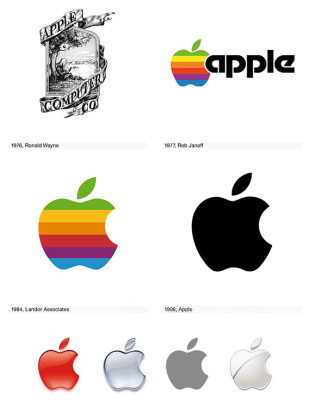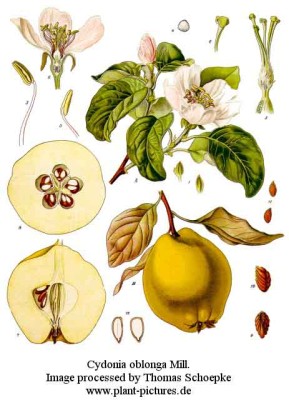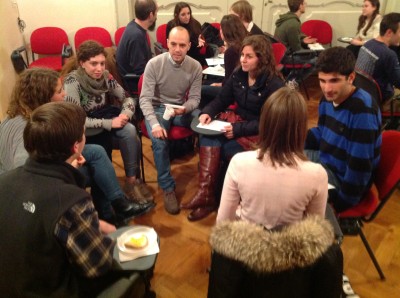An apple a day keeps the doctor away, The Big Apple, Snow White bites the apple, and Steve Jobs’s brand is a bitten apple. But what was this “forbidden fruit” actually like? A common legend says that the Golden Apple of mythology may have been a quince (called “mela cotogna” in Italian). More similar to a yellowish pear, cultivation of the quince may have preceded that of the apple. 
Many references translated to “apple”, such as the fruit in Song of Songs, may have been a quince. Among the ancient Greeks, the quince was a ritual offering at weddings, for it had come from the Levant with Aphrodite and remained sacred to her.
Wikipedia reports:the fruit was known to the Akkadians, who called it supurgillu; Arabic سفرجل al safarjal “quinces”.The modern name originated in the 14th century as a plural of quoyn, via Old French cooin from Latin cotoneum malum / cydonium malum, ultimately from Greek κυδώνιονμῆλον, kydonion melon “Kydonian  apple”.
apple”.
The quince tree is native to Uzbekistan, Tajikistan, Iran, Armenia, Azerbaijan, Georgia, Pakistan, Kashmir, Afghanistan and was introduced to Poland, Syria, Lebanon, Croatia, Bosnia, Turkey, Serbia, Republic of Macedonia, Albania, Greece, Romania, Hungary, Ukraine, Moldova, and Bulgaria. Plutarch reported that a Greek bride would nibble a quince to perfume her kiss before entering the bridal chamber, “in order that the first greeting may not be disagreeable nor unpleasant”.
It was a quince that Paris awarded Aphrodite. It was for a golden quince that Atalanta paused in her race. The Romans also used quinces: the Roman cookbook of Apicius gives recipes for stewing quince with honey, and even combining them, unexpectedly, with leeks. Pliny the Elder mentioned the one variety, Mulvian quince, that could be eaten raw. Columella mentioned three, one of which, the “golden apple” that has donated its name in Italian to the tomato, “pomodoro”
SUF students tasted mela cotogna in one “Spazio Conversazione” weekly meeting on typical Italian sustainable food with their Italian peers. In Italy it is used as the main ingredient of some local variants of a traditional food called mostarda (not to be confused with mustard), in which quince fruit jam is mixed with candied fruit, spices and flavorings to produce a spread that is used on boiled meat, mixed with cheese. Examples are “mostarda vicentina” or “mostarda di Vicenza” and “mostarda veneta.” In Tuscany it is used to make jam and the jelly sweet cream “cotognata”.
Quinces are also used in Parma to produce a typical liqueur called “sburlone”, word coming from the local dialect and meaning the necessary high stress to squeeze those hard fruits to obtain their juice.

SUF Fall 2013 -Tuesdays meetings of “Spazio Conversazione and Sustainable Italian Food: la Mela Cotogna”
